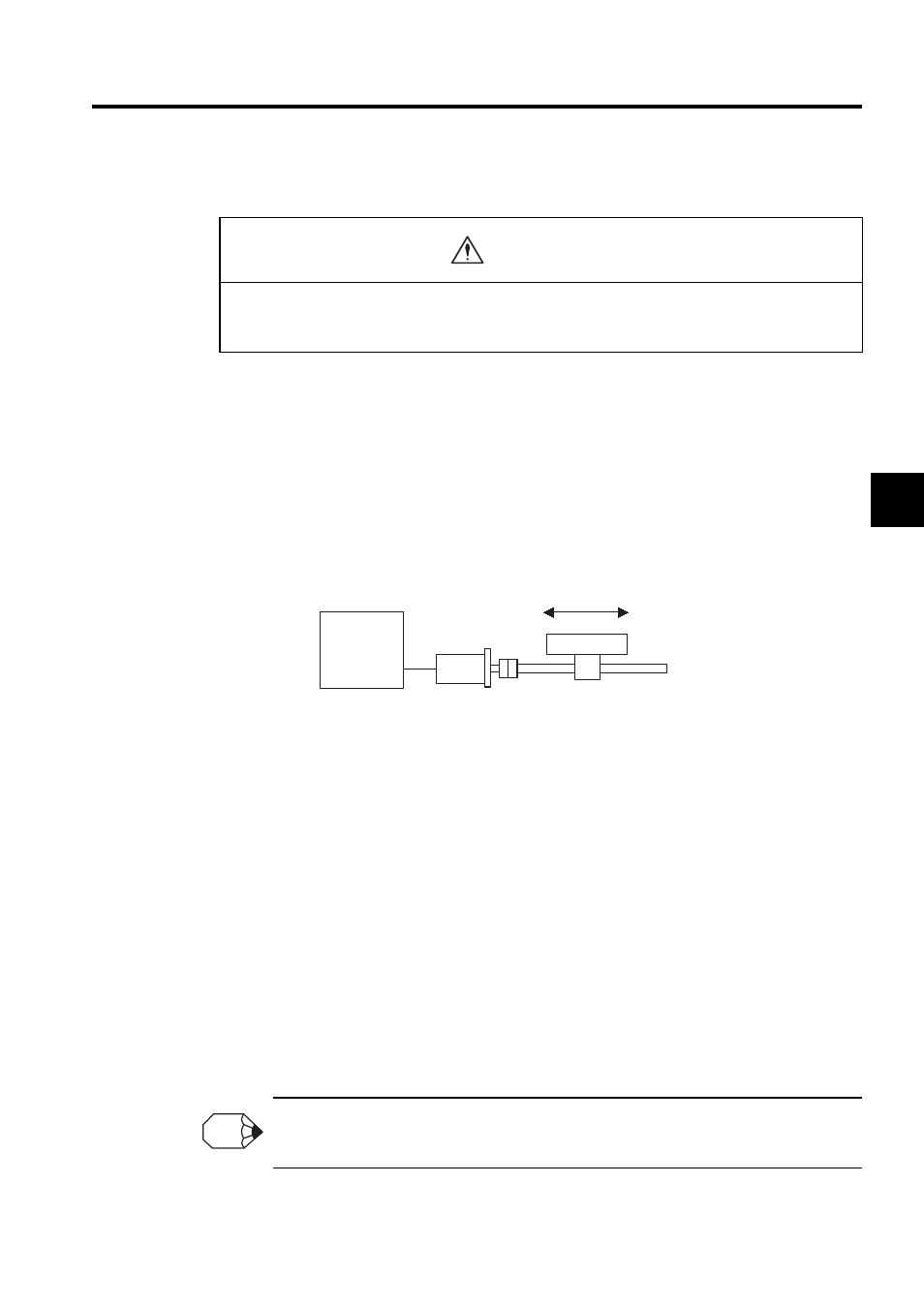Caution – Yaskawa Large Capacity Sigma II Series User Manual
Page 72

3.1 Two-step Trial Operation
3-9
3
3.1.2 Step 2: Trial Operation with the Servomotor Connected to the Machine
Before proceeding to step 2, repeat step 1 (servomotor trial operation without a load) until
you are fully satisfied that all items including parameters and wiring have been tested com-
pletely.
After step 1 has been completed, proceed to step 2 for trial operation with the servomotor
connected to the equipment. The purpose of step 2 is to adjust the SERVOPACK according
to equipment characteristics.
• Use autotuning to match the SERVOPACK to equipment characteristics.
• Match the direction of rotation and speed to equipment specifications.
• Check the final control form.
Follow the procedures below to perform the trial operation.
1. Make sure power is OFF.
2. Connect the servomotor to the equipment.
See 7.4.1 Servomotors for more details on connecting the servomotor.
3. Use autotuning to match the SERVOPACK to equipment characteristics.
Refer to 5.3 Autotuning.
4. Operate the servomotor by reference input.
As in step 1 (servomotor trial operation with no-load), execute operation by reference
input as described in 3.1.1 Step 1: Trial Operation for Servomotor without Load. Tune to
match the host controller at this time as well.
5. Set and record user settings.
Set parameters as required and record all settings for use later in maintenance.
The servomotor will not be broken in completely during the trial operation. Therefore, let it the system
run for a sufficient amount of additional time to ensure that it is properly broken in.
• Follow the procedure below for step-2 operation precisely as given.
Malfunctions that occur after the servomotor is connected to the equipment not only damage the equipment,
but may also cause an accident resulting death or injury.
CAUTION
SGDH
SERVOPACK
Servomotor
Connect to the machine.
INFO
